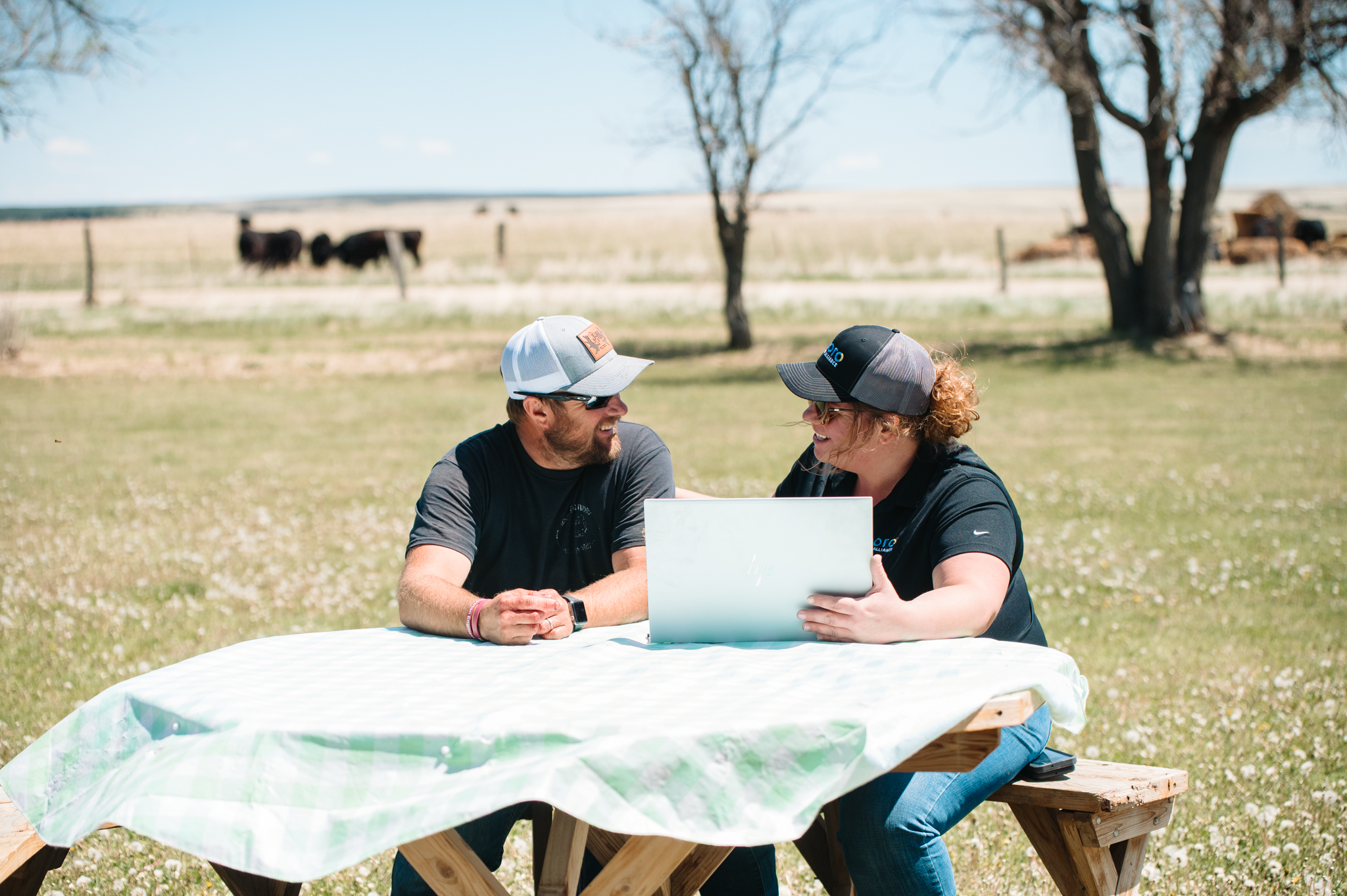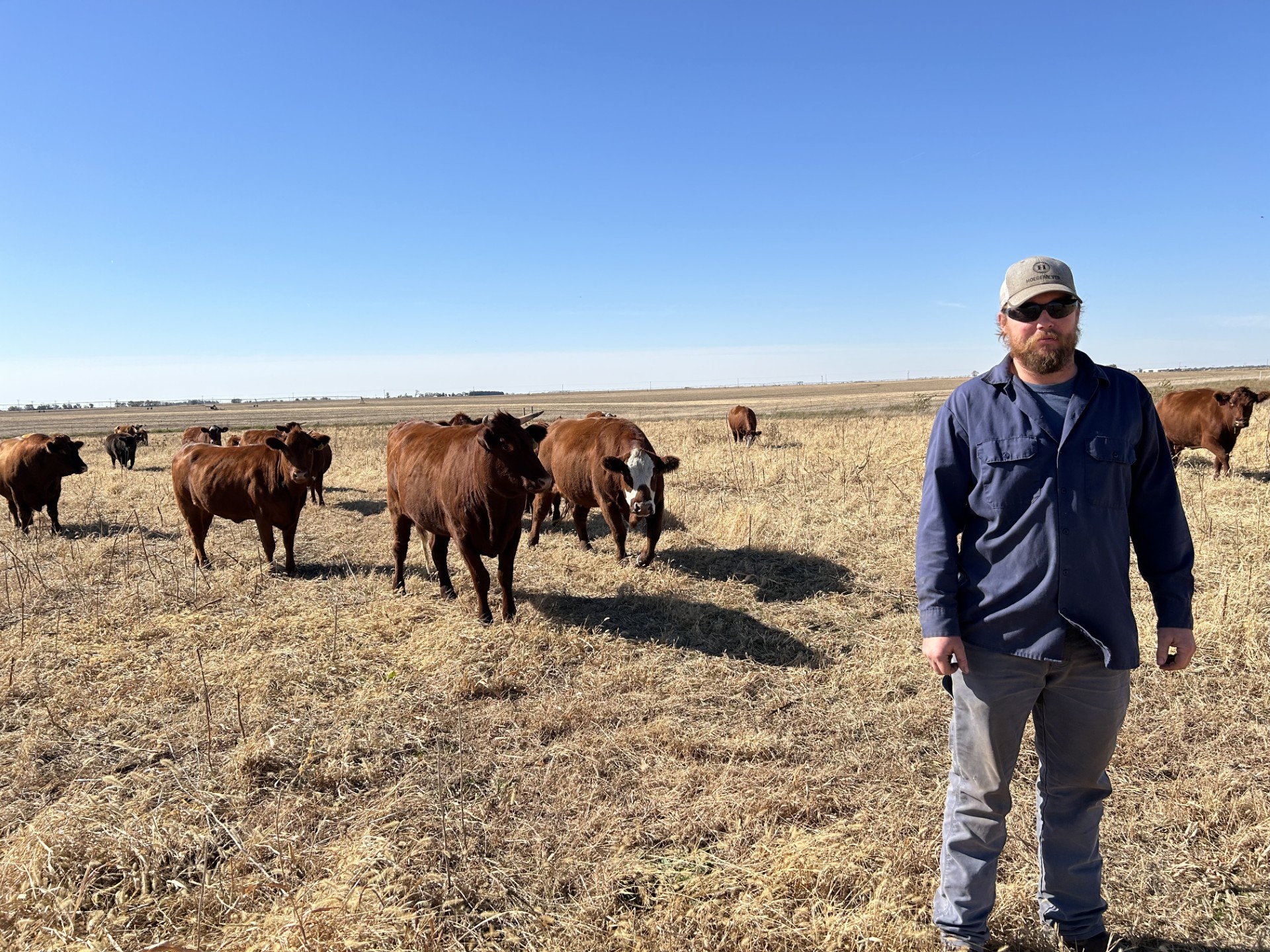The regenerative mindset never ceases to amaze me. Producers evaluate thousands of decisions each year as they try to optimize their evolving operations. Some profitable practices, like improved grazing, seeding, and fertilizing are impactful changes that are on most producer’s radar. However, it seems no rock will be left unturned in the quest for sustainable improvements. No particular input or technology is safe from the conservation chopping block, as regenerative producers zero in on the most profitable and beneficial choice for their operation. On a recent support visit to a cattle ranch Ekalaka, MT, I was reminded of yet another one of the many tweaks that could benefit soil health outcomes on livestock operations.
What does everyone do about deworming?
Transitioning to regenerative agriculture often means many philosophical shifts in how an operation works. We celebrate the stacking benefits of low input decision making models, especially when their reduced cost equates to improved margins and better soil health. One of these decisions regenerative producers often tackle is about addressing parasite concerns in their herd. For many operations across the country, deworming livestock is an annual event in which they administer oral dewormer or use a pour-on application for their livestock. This is done to treat or prevent lice and gastrointestinal worms primarily.
Treating internal parasites in livestock has been historically viewed as a vital part of animal husbandry. Herd health is paramount to every rancher I have ever had the pleasure of visiting with. Some folks cringe at the idea of limiting or altering their use of chemical antiparasitic treatments in any way. Others have happily said goodbye to dewormer and have zero regrets.

Why would we be concerned about deworming agents impacting soil health?
When we take a step back and look at the natural carbon cycle, we see that the livestock and their excrements are just part of the important ecosystem processes of keeping energy and nutrients moving through the system. The soil and the soil biology are on the receiving end of whatever is administered to livestock as it goes through the digestive tract. Pesticides, including antiparasitic drugs, can remain active in the manure for some time. The concern is that this can lead to a reduction in dung beetle populations and have possible negative impacts on many other classes of soil life.
What is a dung beetle anyway?
If you have ever kicked over a manure patty in the middle of the summer, you may have been greeted with a fury of shiny iridescent blackish beetles of varying sizes. Those are dung beetles, and that is where my entomology knowledge on the subject ends. (When my youngest daughter was about four years old, she was hilariously convinced that they were called “dumb beetles,” you know, because they ate poop, so they were dumb!) What we need to know about this prolific group of insects’ role in soil health, is that they are detritivores and essential players in the food web. They digest and break down dead organic matter for us, which is one-way carbon gets stored away in the soil profile. The speed at which manure can be broken down, and its nutrients can be returned to plant roots, depends largely on moisture and temperature. However, this system can also be interrupted by a lack of dung beetles and other biodiverse activity in the soil.
Won’t we still have to deal with worms and lice?
When rotational grazing is practiced, it can help lower the parasite load for animals grazing on those pastures. This is achieved in several ways:
Reduces the concentration of parasite eggs and larva in any one given area.
Breaks the parasite life cycle by moving animals so larvae don’t have a chance to mature and reinfect the same animals.
Results in healthier, more diverse pastures which supports a nutritious diet for livestock, ensuring their immune function and resilience to parasites.
Increases biodiversity of forages, meaning more species may naturally contain antiparasitic compounds.
Decreases grazing in areas contaminated by feces where parasite larvae are most concentrated, reducing the risk of infection.
Provides opportunities for biological control mechanisms such as predation by dung beetles and other beneficial insects.
Paddocks laid out in strips, with their own water sources, offer the most advantage for reducing parasite exposure to livestock. The animals are moved progressively further from the high larval load with each rotation. Systems that are laid out in a pie/pizza shape, or even a grid pattern of fencing, put less distance between the herd and the flies that reinfect them. Continued access to communal water tanks, accessible by multiple pastures, can also serve as areas of possible parasite reinfection.
What are some other deworming options?
There are plenty of types of mineral, salt, or other supplements I see in tubs or clever ranch-built mineral wagons. Often, you can detect the sweet smell of molasses from a distance. I could immediately tell something was different with this one! The trough was filled with the distinctive smelling apple cider vinegar (ACV). They mix it right in with sea salt and offer it free choice along with some conditioner. They no longer use ivermectin or pour-on treatments, although they always reserve the right to use it when needed. Ranchers and scientists are all a bunch of skeptics, so they monitored and evaluated the change rigorously. The cows like it, they report; it attracts them to the salt. They see even more value from the ACV, which they have delivered in 500-gallon shuttle totes, when their cattle are grazing on winter pastures. The rough standing-dead forage is full of cellulose, which makes plant cell walls rigid and adds fiber to our morning bowls of oats. ACV reportedly aids in breaking down that fiber, while it adds other digestive and health benefits for the critter. It’s also considerably cheaper than their previous deworming protocols.
The commercial market for natural alternative dewormers is gaining a lot of traction. In the regenerative movement, producers are reducing reliance on excessive external fixes such as pesticides, supplements, and other purchased inputs. Instead, they leverage natural processes and ecological principles to enhance soil health, biodiversity, and overall ecosystem resilience. It is an easy trap to fall into, that one must replace the forgone input or tool, with another equally costly fix-all. It is often more about small practical switches specific to each operation, and there is no silver bullet.
Some producers opt to limit dewormer on their rangelands by not treating their commercial cattle herd. A purebred, show cattle, or club calf operation might not consider the same flexibility with performance or appearance though. Ranches in less hot or humid climates, which are ideal for parasites, might enjoy an even easier transition away from intensive deworming protocols. Some operations just pull out the dewormer only after diagnostic testing, or if they see a drop in feedlot performance or just when they get in a new truckload of lousy heifers, for example. Managers who are trying to tune into soil health might consider that if they are going to use something with potential drawbacks, they will use it wisely. General treatment guidelines are even shifting to encourage approaches where a portion of the herd is left intentionally un-treated in order to fight widespread parasite resistance. Did you know it might be more effective to use pour-on while it is still cold out and the lice larvae are still embedded in their hide? I learn something new every day as I ask ranchers these kinds of questions and hear how these progressive practice changes are working out on the ranch level.

Does it make a difference for the soil?
The energy and nutrient cycles on this particular dewormer-free pasture were functioning at impressive levels. Still, this rancher would likely credit their attention to grazing and their diverse interseeding mixes more than they would credit their parasite remedies. In the West, water is the most limiting factor for forage growth and soil health. Every little bit counts though, we are trying to give the soil biology the environment they need to thrive and do the excellent work of providing nutrients to plant roots. Along with keeping living roots in the ground, keeping the soil covered, and maximizing biodiversity- minimizing disturbance is the goal. Dewormer is a potential biological disturbance to living soil. In the mission to prioritize land, animal, and human health, it is one of the many impacts producers are taking a closer look at.

Whether or not an operation chooses to minimize/avoid the use of chemical dewormers, or not, has no bearing on their merit as a herdsman or a land steward. All thoughtful methods are welcome under the so-called “big tent” of regenerative agriculture. It is a privilege to witness the countless soil smart innovations happening on the partner ranchers we support, and to spread the good word to the wonderful welcoming community that is regenerative agriculture.




